Share graphic examples about mechanisms in Java
A picture is always worth a million words!
I hope this article can help you review the knowledge you already know. If the picture doesn't explain it clearly enough, you may need to read the detailed article or search.
1. The immutable characteristics of String objects
The following figure shows the process of running the following code:
String s = "abcd";
s = s.concat("ef");Chinese reference: Java String Detailed Explanation
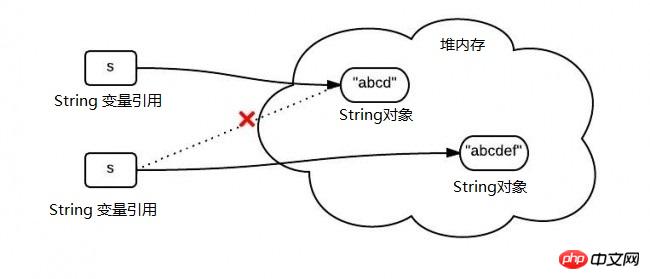
##2. Equals() and hashCode() method collaboration agreement
HashCode(ha Hash code, hash code) is designed to improve performance.The relationship between the equals() and hashCode() methods can be summarized as:
2.1 If two objects are equal (equal), then they must Have the same hash code(hash code)
2.2 Even if two objects have the same hash value(hash code), they are not necessarily equal.
Chinese Reference: Implementation Principle of HashMap
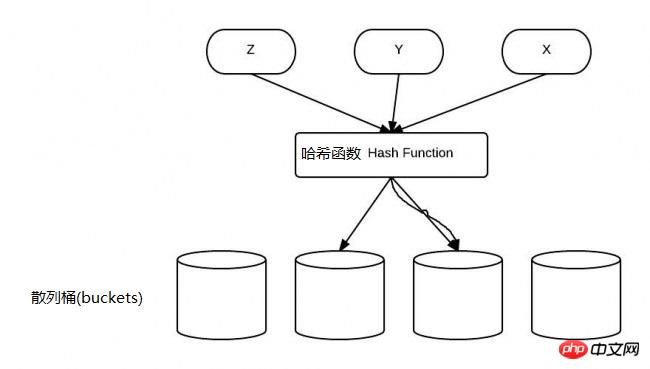
3. Java exception class hierarchyThe pink ones are checked exceptions (checked exceptions), which must be tried{} Caught by the catch statement block, or declared through the throws clause in the method signature.
Another type of exception is runtime exceptions (runtime exceptions), which require the programmer to analyze the code to decide whether to catch and handle it.
Those declared as Error are serious errors and require special processing based on business information. Error does not need to be captured.
Chinese example: Exception
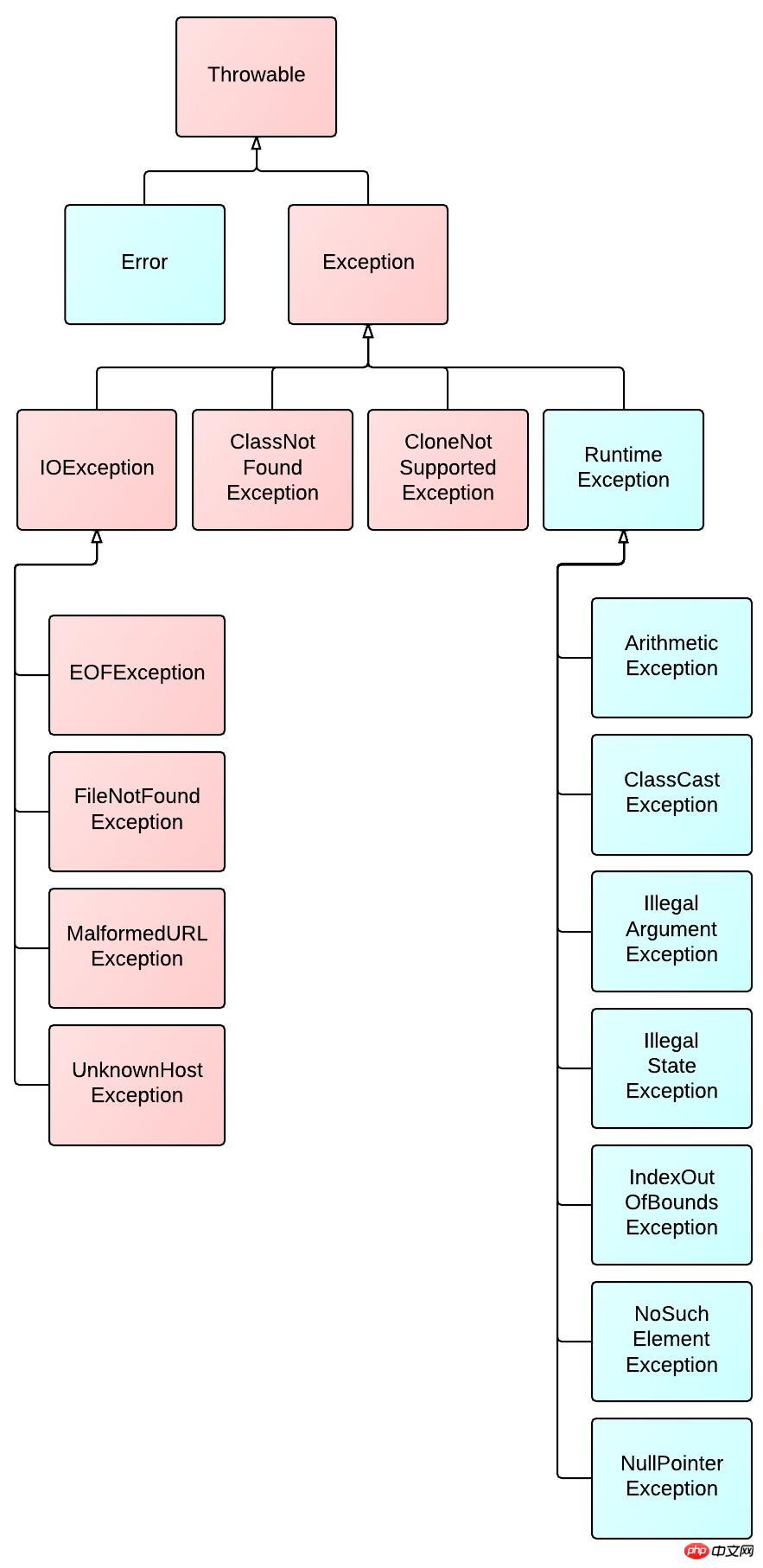
4. Collection class hierarchy relationshipPay attention to Collections (tool class) and Collection (collection top-level interface ) difference:
Chinese reference: Collections
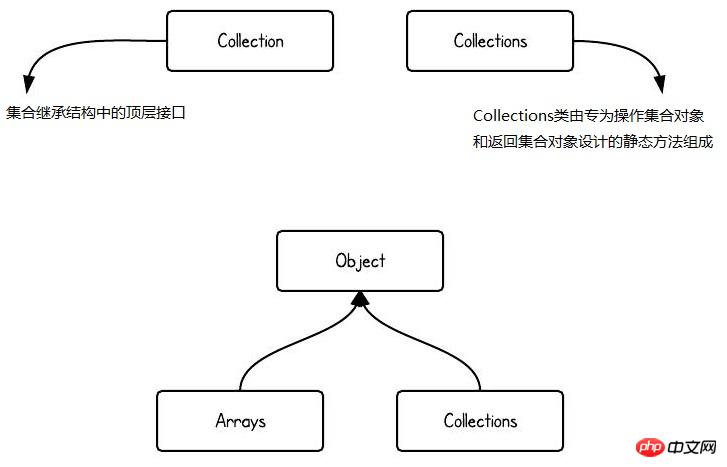

##5. Lock ——The basic idea of Java synchronization
Java synchronization (synchronization) mechanism can be compared with a building:Chinese reference: Thread synchronization---synchronized
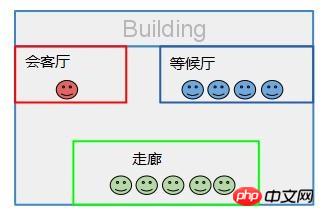
6.Java object reference processing mechanism
Alias refers to multiple references pointing to the same memory address (the actual address of the object, which can be understood as the object), and even the names of these references The types are completely different.
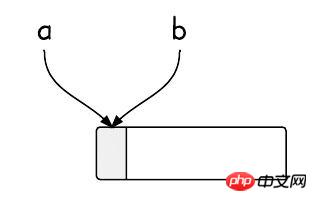
7. The memory structure of Java objects in the heap
The following figure shows the operation The location of methods and objects in memoryIn most cases: objects (and their attribute fields) are stored in the heap, while method parameters, local variables (references, and 6 basic types) are stored in Inside the stack.
Of course, under very special circumstances (extreme optimization [object push], constant pool [String], static variable [method area], etc.), this unspoken rule will be broken.

The following figure shows the overall data area of the JVM (Java Virtual Machine) runtime Division
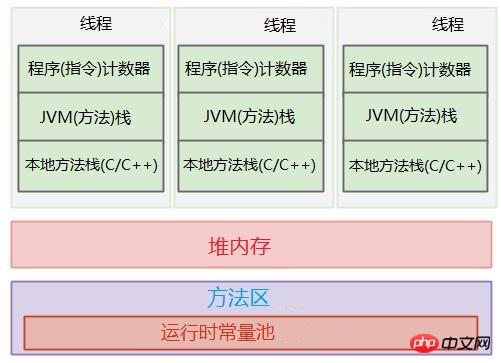
The above is the detailed content of Share graphic examples about mechanisms in Java. For more information, please follow other related articles on the PHP Chinese website!

Hot AI Tools

Undresser.AI Undress
AI-powered app for creating realistic nude photos

AI Clothes Remover
Online AI tool for removing clothes from photos.

Undress AI Tool
Undress images for free

Clothoff.io
AI clothes remover

Video Face Swap
Swap faces in any video effortlessly with our completely free AI face swap tool!

Hot Article

Hot Tools

Notepad++7.3.1
Easy-to-use and free code editor

SublimeText3 Chinese version
Chinese version, very easy to use

Zend Studio 13.0.1
Powerful PHP integrated development environment

Dreamweaver CS6
Visual web development tools

SublimeText3 Mac version
God-level code editing software (SublimeText3)

Hot Topics
 1387
1387
 52
52
 Perfect Number in Java
Aug 30, 2024 pm 04:28 PM
Perfect Number in Java
Aug 30, 2024 pm 04:28 PM
Guide to Perfect Number in Java. Here we discuss the Definition, How to check Perfect number in Java?, examples with code implementation.
 Weka in Java
Aug 30, 2024 pm 04:28 PM
Weka in Java
Aug 30, 2024 pm 04:28 PM
Guide to Weka in Java. Here we discuss the Introduction, how to use weka java, the type of platform, and advantages with examples.
 Smith Number in Java
Aug 30, 2024 pm 04:28 PM
Smith Number in Java
Aug 30, 2024 pm 04:28 PM
Guide to Smith Number in Java. Here we discuss the Definition, How to check smith number in Java? example with code implementation.
 Java Spring Interview Questions
Aug 30, 2024 pm 04:29 PM
Java Spring Interview Questions
Aug 30, 2024 pm 04:29 PM
In this article, we have kept the most asked Java Spring Interview Questions with their detailed answers. So that you can crack the interview.
 Break or return from Java 8 stream forEach?
Feb 07, 2025 pm 12:09 PM
Break or return from Java 8 stream forEach?
Feb 07, 2025 pm 12:09 PM
Java 8 introduces the Stream API, providing a powerful and expressive way to process data collections. However, a common question when using Stream is: How to break or return from a forEach operation? Traditional loops allow for early interruption or return, but Stream's forEach method does not directly support this method. This article will explain the reasons and explore alternative methods for implementing premature termination in Stream processing systems. Further reading: Java Stream API improvements Understand Stream forEach The forEach method is a terminal operation that performs one operation on each element in the Stream. Its design intention is
 TimeStamp to Date in Java
Aug 30, 2024 pm 04:28 PM
TimeStamp to Date in Java
Aug 30, 2024 pm 04:28 PM
Guide to TimeStamp to Date in Java. Here we also discuss the introduction and how to convert timestamp to date in java along with examples.
 Java Program to Find the Volume of Capsule
Feb 07, 2025 am 11:37 AM
Java Program to Find the Volume of Capsule
Feb 07, 2025 am 11:37 AM
Capsules are three-dimensional geometric figures, composed of a cylinder and a hemisphere at both ends. The volume of the capsule can be calculated by adding the volume of the cylinder and the volume of the hemisphere at both ends. This tutorial will discuss how to calculate the volume of a given capsule in Java using different methods. Capsule volume formula The formula for capsule volume is as follows: Capsule volume = Cylindrical volume Volume Two hemisphere volume in, r: The radius of the hemisphere. h: The height of the cylinder (excluding the hemisphere). Example 1 enter Radius = 5 units Height = 10 units Output Volume = 1570.8 cubic units explain Calculate volume using formula: Volume = π × r2 × h (4
 Create the Future: Java Programming for Absolute Beginners
Oct 13, 2024 pm 01:32 PM
Create the Future: Java Programming for Absolute Beginners
Oct 13, 2024 pm 01:32 PM
Java is a popular programming language that can be learned by both beginners and experienced developers. This tutorial starts with basic concepts and progresses through advanced topics. After installing the Java Development Kit, you can practice programming by creating a simple "Hello, World!" program. After you understand the code, use the command prompt to compile and run the program, and "Hello, World!" will be output on the console. Learning Java starts your programming journey, and as your mastery deepens, you can create more complex applications.




